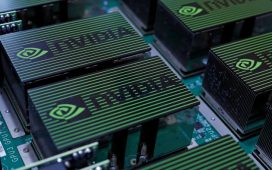When the plastics manufacturing plant Roger Binegar had worked in for 28 years closed in 2009, it felt like manufacturing in south-western Ohio had all but been consigned to history.
Yet 14 years later, a huge new construction effort is under way a stone’s throw from his home outside Jeffersonville. The Japanese carmaker Honda and the electronics company LG are building a battery manufacturing plant slated to employ 2,000 people once it’s up and running in 2026.
Honda has committed to selling only electric vehicles in its major markets by 2040 and sees Ohio – where it employs more than 15,000 people across five plants – as its US hub.
Despite Binegar’s concern that traffic is likely to increase, on the whole, he believes it’s a positive move for the local economy. “I’d like to see it stay corn or bean fields, but it’s been zoned for industrial use for years,” he said.
“I understand it’s progress. People got to work. You got to have jobs to live.”
The new battery plant represents a new shift to reimagine the US’s long-suffering industrial heartland from the Rust belt to “Silicon Heartland”.
An hour’s drive north in New Albany, Ohio, Intel is building a $20bn semiconductor manufacturing plant while $100bn is expected to be spent on another chip factory in Syracuse, New York. In Indiana, thousands of acres of farmland are being converted into technology parks.
The 2022 Chips Act will see around $280bn poured into the US economy through grants, tax breaks and research incentives in a bid to reshore the making of essential technologies such as semiconductors.
“One advantage of having big companies return to the midwest is that it helps take seriously some of the crises around geopolitical tensions, climate change or potential disruption to our supply chains,” the Brookings Institution fellow Annelies Goger said. “It would help us have more capacity domestically to overcome those types of shocks in the future.”
But dreams of economic revival aren’t working out for all.
To huge fanfare in 2018, the then governor of Kentucky, Matt Bevin, turned the sod on the site of a new steel mill outside Ashland, a community in his state of 20,000 people that for decades had been racked by unemployment and outward migration. The brainchild of Braidy Industries (later Unity Aluminum), the project was pitched as the world’s largest low-carbon, rolled aluminum producer, as well as the first new greenfield aluminum mill to be constructed in the US for 37 years.

The $1.6bn factory was to create 600 jobs and pay workers double the local average wage. Kentucky chipped in $15m in state taxpayers’ money to help get the project moving forward. Rusal, the Russian aluminum giant, committed $200m in return for a 40% stake. The news was a huge boost to Ashland, which has a century-long history of steel manufacturing.
But things quickly unraveled. Immediately, Braidy Industries struggled to raise money and by 2021, Rusal had suspended its investment. In Ashland, the location of the proposed mill – inside an industrial parkway – puzzled locals.
“There was no water, no electric at the site,” said Kendall Kilgore, president of the local United Steelworkers chapter. “It wasn’t feasible for an aluminum mill – it takes a lot of water to run an aluminum mill.”
Last year, reports emerged that the project would not go ahead. Though Kentucky authorities since regained their $15m investment, locals were devastated: many had spent years working on gaining credentials for jobs that ultimately never materialized.
“[Locals] all got a degree that they can’t use nowhere,” Kilgore said. “The local college had set up a class just for that plant.”
Several have since had to leave Ashland for jobs in Ohio and Michigan.
While each project faces unique challenges, experts say road bumps are to be expected as Chips Act funding begins streaming into towns, cities and research centers across the country.
“The challenge is going to be that these are regions that don’t have an accumulation of the things you need, whether that’s workforce or managerial skills or supplier ecosystems that would be required,” Goger said. “But you’ve got to start somewhere.
“It may take five years to reach a cohesion at a regional level. That worries me because there is a lot of money to get out real quick.”
Even at the under-construction battery plant in Ohio, where Honda has enjoyed strong community ties for more than four decades, the building stage has not been without hiccups. Roger Binegar said that a month ago his water well ran dry. Construction crews at the plant had been drilling a test well about 100 yards from his property line, pumping huge volumes of water that took away from his private supply.
But he was surprised by the response he received.
“We called [the construction company] and as soon as we told them it was dry, they stopped immediately and didn’t drill any further,” he said.
Binegar’s well filled back up, and the company replaced his well pump, delivered extra water supplies and left gift cards for him and his wife.
“That was excellent,” he says. “I have no complaints about them.”









